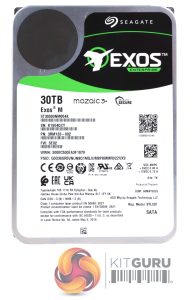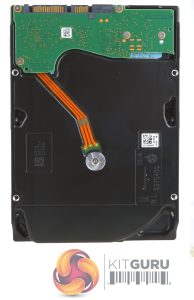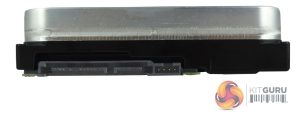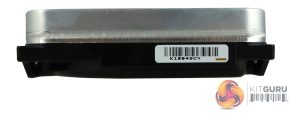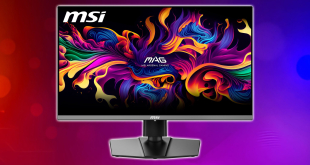Seagate's Exos M is built on a standard 3.5-inch format with a 26.11mm height. The drive uses Helium technology, allowing Seagate to use ten 3TB platters and 20 heads in the enclosure. The drive has a spindle speed of 7,200rpm and there is 512MB of cache.
The CMR (Conventional Magnetic Recording) Helium drive is built on Seagate's Mosaic 3+ platform, which implements the second generation of the company's HAMR (Heat-Assisted Magnetic Recording) technology, enabling the high areal density (1841Gb/in²) platters that the drive uses. Seagate's Mozaic 3+ technology has been designed from the ground up to push the boundaries of how much storage space can be offered in a standard 3.5-inch platform by increasing the areal density of platters to new heights by using leading-edge technologies.
Superlattice platinum-alloy media
To get 3TB+ platter capacity, there has to be a move away from the traditional materials that were used in the past to something more exotic that allows for denser writing of data. Seagate's Mozaic 3+ technology uses Superlattice platinum-alloy media, which gets over the obstacle of magnetic instability at the nanoscale level, a byproduct of trying to store ever denser data. The platinum alloy recording media is made up of highly magnetic platinum (Pt) and iron (Fe) particles.
Plasmonic Writer
To prevent data instability, the platinum-alloy media is magnetically harder, which means it needs a completely new approach to writing the data – enter the Plasmonic writer. The writer is made up of three major elements:-
Nanophotonic laser
Produces a focused beam of light to heat up (800º + Fahrenheit) an area of the platinum-alloy media in less than two nanoseconds.
Photonic funnel
Channels the laser light from the laser to the quantum antenna
Quantum antenna
This focuses the laser's energy on a tiny spot on the media surface
So, having written incredibly dense data, the next challenge is to read it; that's where the Gen 7 spintronic reader comes in.
Gen 7 Spintronic Reader
Seagate's Spintronic Reader is one of the world's smallest and most sensitive magnetic field
reading sensors, capable of detecting minute changes in magnetisation. It can accurately read the densely packed data thanks to its very narrow track width, which helps minimise crosstalk errors from neighbouring tracks.
Integrated Controller
With all this going on, you need something to take control of it all, and that's where Seagate's 12nm integrated controller comes in. The new controller is a Seagate in-house design SOC that looks after read channels, disk management, and data exchange protocols. It features the first ever RISC-V processor to be used to control a hard drive, also designed in-house by Seagate.
 KitGuru KitGuru.net – Tech News | Hardware News | Hardware Reviews | IOS | Mobile | Gaming | Graphics Cards
KitGuru KitGuru.net – Tech News | Hardware News | Hardware Reviews | IOS | Mobile | Gaming | Graphics Cards


